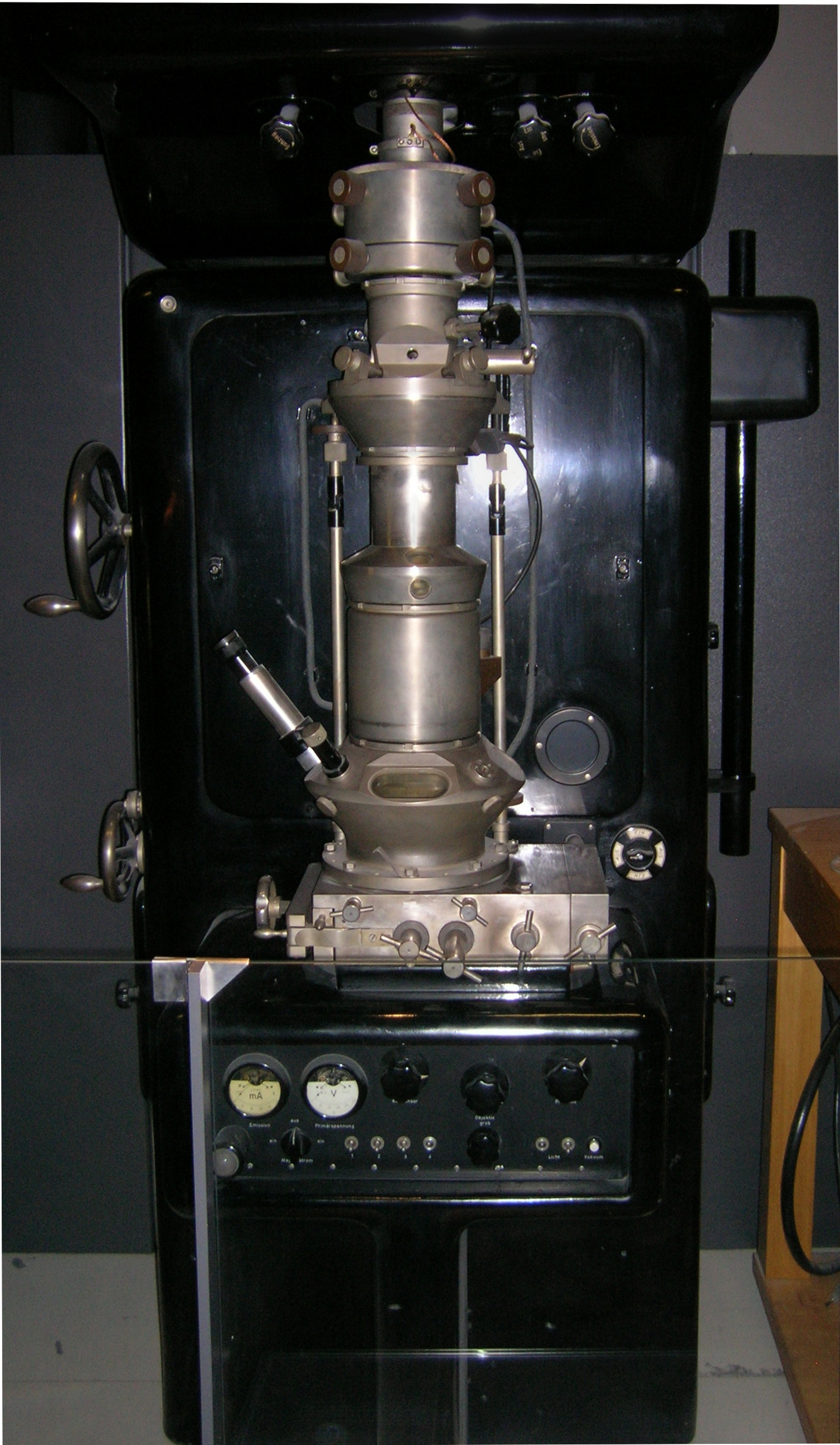1. Early Life and Education
Ernst Ruska's foundational years and early academic pursuits laid the groundwork for his groundbreaking contributions to electron microscopy.
1.1. Birth and Childhood
Ernst August Friedrich Ruska was born on December 25, 1906, in Heidelberg, Germany.
1.2. Academic Journey and Early Research
Ruska pursued his higher education at the Technical University of Munich from 1925 to 1927. Following this, he enrolled at the Technische Universität Berlin (then known as Technische Hochschule Berlin). It was during his studies here that he theorized that microscopes utilizing electrons, which possess wavelengths approximately 1,000 times shorter than those of light, could offer a much more detailed image of objects. This was a critical insight, as the magnification capability of traditional light microscopes is inherently limited by the size of light wavelengths. His early research, including collaboration with Max Knoll, focused on this principle, ultimately paving the way for the invention of the electron microscope.
2. Scientific Career and Major Contributions
Ruska's professional life was marked by continuous innovation and significant advancements in the field of electron optics, culminating in the widespread adoption of electron microscopy.
2.1. Development of the Electron Microscope
In 1931, Ruska successfully demonstrated the principle that a magnetic coil could function effectively as an electron lens. Building upon this crucial discovery, he then used several such coils arranged in a series to construct the first fully functional electron microscope in 1933. This invention offered a significant leap in magnification capabilities, far exceeding the limits of traditional light microscopes by harnessing the much shorter wavelengths of electrons.

2.2. Work at Siemens and Other Institutions
After completing his PhD in 1933, Ruska continued his dedicated work in electron optics. He initially joined Fernseh AG in Berlin-Zehlendorf. In 1937, he moved to Siemens-Reiniger-Werke AG (now part of Siemens). At Siemens, he played a pivotal role in the development and production of the first commercially available electron microscope, which was launched in 1939. Beyond his direct development work, Ruska also actively engaged with other scientific institutions. He was instrumental in persuading Siemens to establish a dedicated laboratory for visiting researchers, a facility that was initially headed by his brother, Helmut Ruska. Helmut, a medical doctor, significantly contributed to the practical application of the electron microscope in medical and biological applications.
2.3. Later Career and Academic Engagements
Ruska departed from Siemens in 1955. Subsequently, he assumed the directorship of the Institute for Electron Microscopy at the Fritz Haber Institute of the Max Planck Society, a position he held until 1974. Concurrently, from 1957 until his retirement in 1974, he also served as a professor at the Technische Universität Berlin.
3. Major Awards and Honors
Throughout his distinguished career, Ernst Ruska received numerous accolades for his groundbreaking work.
- In 1960, he was awarded the Lasker Award, specifically the Albert Lasker Award for Basic Medical Research.
- In 1970, he received the Paul Ehrlich and Ludwig Darmstaedter Prize.
- The Cothenius Medal was bestowed upon him in 1975.
- In 1986, Ruska was awarded half of the Nobel Prize in Physics in recognition of his extensive achievements in electron optics. The other half was jointly awarded to Gerd Binnig and Heinrich Rohrer for their design of the scanning tunneling microscope. In the same year, he also received the Robert Koch Gold Medal.
4. Selected Publications
Ernst Ruska documented his pioneering research and discoveries in a series of influential scientific papers and other academic works. Key publications include:
- "Über eine Berechnungsmethode des Kathodenstrahloszillographen auf Grund der experimentell gefundenen Abhängigkeit des Schreibfleckdurchmessers von der Stellung der Konzentrierspule" (1929)
- "Untersuchung elektrostatischer Sammelvorrichtungen als Ersatz der magnetischen Konzentrierspulen beim Kathodenstrahloszillographen" (1930)
- "Die magnetische Sammelspule für schnelle Elektronenstrahlen" (with M. Knoll, 1931)
- "Das Elektronenmikroskop" (with M. Knoll, 1932)
- "The Electron Microscope as Ultra-Microscope" (1935)
- "Über den Aufbau einer elektronenoptischen Bank für Versuche und Demonstrationen" (1952)
- "Erinnerungen an die Anfänge der Elektronenmikroskopie" (1970)
- "Das Entstehen des Elektronenmikroskops und der Elektronenmikroskopie" (Nobel Lecture, 1987), which was also published in English as "The Development of the Electron Microscope and of Electron Microscopy".
5. Personal Life
Ernst Ruska was married to Irmela. Their relationship gained a unique form of recognition when asteroid 1178 Irmela, discovered by Max Wolf, was named after her. Irmela was also Max Wolf's niece.
6. Death
Ernst August Friedrich Ruska passed away on May 27, 1988, in West Berlin, at the age of 81. While some sources indicate May 25, the Ruska memorial site, maintained by his family, confirms May 27 as the accurate date of his passing.
7. Legacy and Impact
The invention and subsequent development of the electron microscope by Ernst Ruska had a profound and lasting influence on scientific research and technological advancement worldwide.
7.1. Contributions to Science and Technology
The electron microscope revolutionized various scientific and technological disciplines by offering unprecedented levels of magnification and resolution. In physics, it enabled the detailed study of materials at the atomic level, revealing intricate structures and defects. For biology and medicine, it provided the first direct visualization of viruses, organelles, and other ultra-fine structures within cells, fundamentally transforming understanding of biological processes and disease mechanisms. Its impact extended to chemistry, engineering, and many other fields where detailed examination of nanomaterials and microstructures is crucial. Ruska's work laid the foundation for modern electron microscopy techniques and instrumentation, continuing to drive discoveries across the scientific spectrum.
8. Commemoration and Recognition
Ernst Ruska's pioneering work is remembered and honored through various forms of lasting recognition. His contributions are commemorated, and memorial information is maintained by his family through a dedicated website, [http://ernst.ruska.de/daten_e/mainframe_e.html ernst.ruska.de].